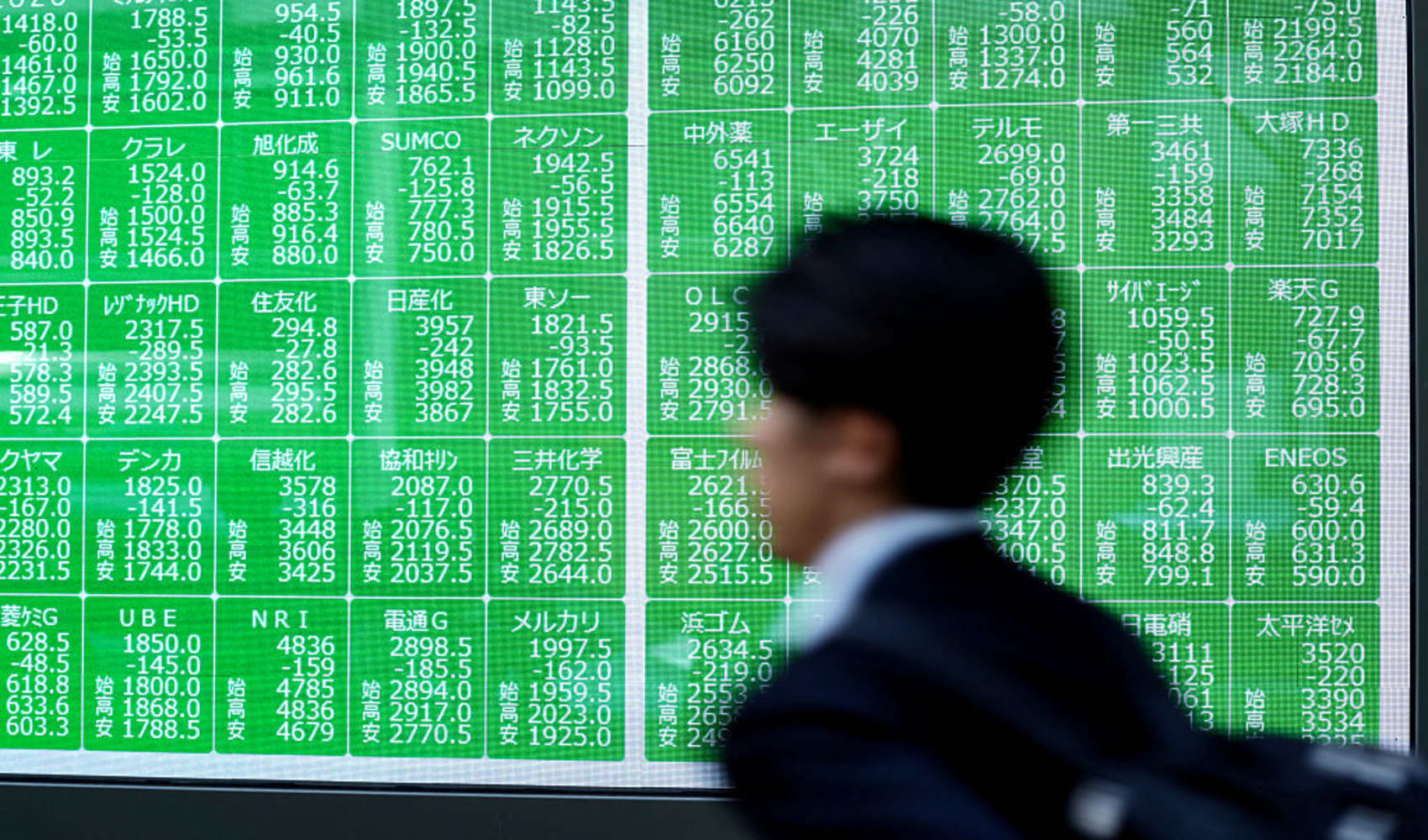Investors Flee to Europe: Trump's Tariffs Blamed
Trump's Tariffs Trigger Exodus: Investors Flee to Europe and Japan
Introduction: The Great Investment Migration
Ever feel like you're watching a financial tectonic shift in real-time? Well, according to Bank of America, that's precisely what happened after former President Donald Trump ramped up tariffs, sending shivers down the spines of U.S. investors. A whopping $8.9 billion was yanked out of U.S. equities in a single week, with much of it finding refuge across the Atlantic and the Pacific.
Tariffs: The Catalyst for Capital Flight
Imagine building a sandcastle, only for a wave to come crashing down. That's how Trump's unpredictable tariff policies felt to many investors. These policies, designed to protect American industries, ironically sparked uncertainty and volatility, leading to a significant outflow of capital.
The Tariff Rollercoaster
It wasn't just the tariffs themselves, but the constant back-and-forth. One day tariffs were announced, the next they were paused, then ramped up again. This uncertainty created a climate of fear and made it difficult for investors to plan for the future.
Where Did the Money Go? Europe and Japan Emerge as Havens
So, where did this fleeing capital land? Bank of America's data points to Europe and Japan as the primary beneficiaries. These regions, seen as relatively stable and offering potentially better returns, became attractive alternatives to the turbulent U.S. market.
The Appeal of European Markets
Europe, despite its own set of economic challenges, offered a sense of stability compared to the tariff-riddled U.S. market. Companies like LVMH and Nestle proved very resilient.
Japan's Resurgence
Japan, with its strong manufacturing base and technological innovation, also saw increased investment. The Japanese Yen served as a safe-haven currency, further bolstering the country's appeal.
Bank of America's Data Dive: A Closer Look
Let's break down the numbers. According to Bank of America, U.S. equities experienced an $8.9 billion outflow in the week ending April 30. Meanwhile, a substantial $7.8 billion flowed into foreign stocks.
Outflows from US Equities
An $8.9 billion outflow from U.S. equities is not merely a drop in the bucket, it signals a significant shift in investor sentiment.
Inflows into Foreign Stocks
The corresponding $7.8 billion inflow into foreign stocks confirms that investors were actively seeking opportunities elsewhere, actively searching for better returns on their investments.
Beyond Equities: A Diversification Story
It wasn't just about equities. Investors were also reallocating capital across different asset classes. Gold and U.S. Treasury bonds saw outflows, while cryptocurrencies, high yield bonds, and technology stocks experienced inflows.
The Cryptocurrency Surge
Despite the inherent volatility of cryptocurrencies, some investors saw them as a hedge against economic uncertainty, or as an avenue for aggressive returns. Inflows into cryptocurrencies are a symptom of investors seeking alternatives.
High Yield Bonds and Technology Stocks
The attractiveness of High Yield bonds and Technology stocks shows an appetite for riskier, yet potentially more profitable assets during this market shift.
BofA's Private Clients: A Portfolio Snapshot
Bank of America's private clients, representing a significant segment of the investment landscape, held 62% of their portfolio in stocks, 20% in bonds, and 12% in cash. This allocation provides a glimpse into the risk appetite and diversification strategies of high-net-worth individuals.
The Broader Impact on Wall Street
The outflow of capital from U.S. markets had a ripple effect on Wall Street. Stock prices fluctuated, and investor confidence wavered. The market became more sensitive to news and economic data, making it harder to predict future performance.
The Political and Economic Context
Trump's tariff policies were driven by a desire to level the playing field with other countries and protect American jobs. However, the unintended consequence was increased economic uncertainty and a flight of capital from U.S. markets.
Analyzing Investor Sentiment and Behavior
The investor sentiment at the time was clearly one of caution. The fear of escalating trade wars and economic instability drove many investors to seek safer havens for their capital.
Lessons Learned: Navigating Market Volatility
This episode serves as a valuable lesson in navigating market volatility. It highlights the importance of diversification, risk management, and staying informed about global economic and political developments. Investors should consider what this means to their investment strategies and potentially re-evaluate for the future.
Looking Ahead: The Future of Investment Flows
Will the capital that fled the U.S. ever return? That depends on a variety of factors, including future trade policies, economic growth, and investor confidence. The investment landscape is constantly evolving, and investors must remain vigilant and adaptable.
Conclusion: Key Takeaways
In conclusion, Trump's tariffs triggered a significant outflow of capital from U.S. markets, with Europe and Japan emerging as attractive alternatives. This event underscores the importance of diversification, risk management, and staying informed about global economic trends. As investors navigate an increasingly complex and volatile world, these lessons will prove invaluable.
Frequently Asked Questions (FAQ)
Why did investors flee U.S. markets after Trump's tariffs?
Investors feared the economic uncertainty and potential negative impact of the tariffs on U.S. companies' profitability and global trade.
Where did most of the investment money go after leaving the U.S.?
According to Bank of America, Europe and Japan were the primary destinations for the fleeing capital, as they were seen as relatively stable markets.
What other asset classes experienced outflows besides U.S. equities?
Gold and U.S. Treasury bonds also experienced outflows, as investors sought alternative investments.
How did Bank of America track these investment flows?
Bank of America's strategists analyzed data on investment flows in and out of various asset classes to determine where the capital was moving.
What can investors learn from this market shift?
This event highlights the importance of diversifying investments, managing risk, and staying informed about global economic and political developments to navigate market volatility effectively.

